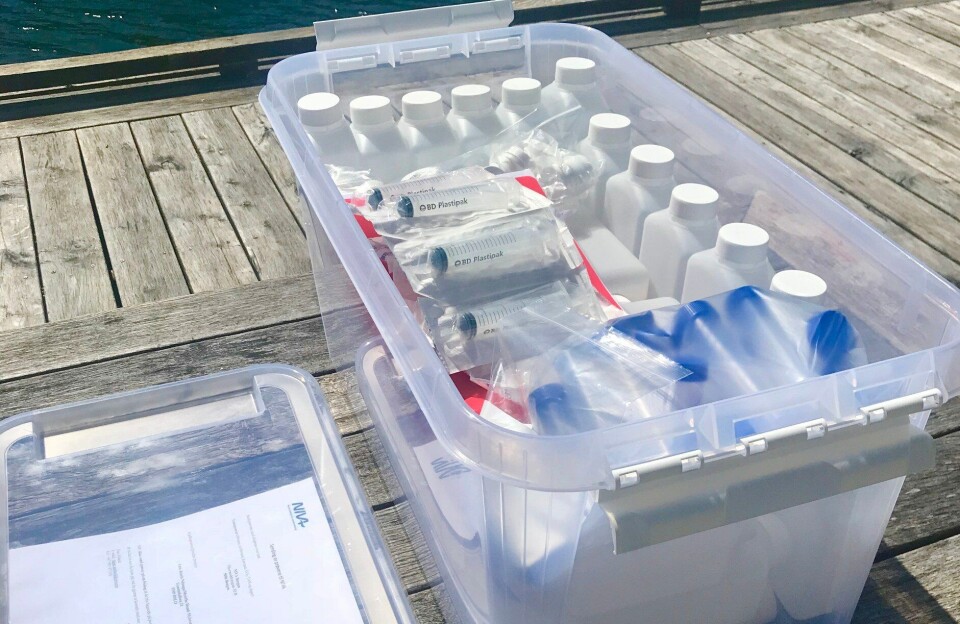
Researchers highlight hidden killers in RAS water
Reports of acute mortality in recirculating aquaculture systems (RAS) have become more common and have revealed a need for water sampling equipment to help pinpoint the causes, according to Norwegian scientists.
Åse Åtland, research leader at the Norwegian Institute for Water Research (NIVA Aquaculture), said that during the past two and a half years NIVA had experienced an increase in requests to investigate acute fish deaths. The causes have partly been linked to metal problems and hydrogen sulphide formation in connection with the use of seawater. In addition, she says they have identified some cases where lime and salt have been used.
Åtland says that at some RAS plants, salt is used instead of seawater, justified in reducing infection risk but perhaps also containing a hidden killer.
Hydrogen cyanide
“Salt usually contains an added anti-caking agent in the form of a cyanide compound, which is harmless and allowed to be used, but the disadvantage is that if you UV-illuminate the water with the salt, you will get toxic hydrogen cyanide, also known as hydrocyanic acid,” she points out.

Åtland says scientists do not know if this problem has caused mortality at some plants, but in some instances they see that salt is added just before UV. Åtland thinks that this is a risk that should not be taken, saying that there are salt products that do not contain this anti-caking agent.
She also states that some salt and lime products can contain metals, saying that they have found both aluminium and copper in such products.
Aluminium
“Aluminium, especially, is crucial when it comes to mortality. The water quality varies greatly in Norway, and some water contains a lot of humus. Especially the waters of central Norway are very humus-rich, and many enquiries to NIVA come from here.”
According to Åtland, humus draws metal that will bind to the humus particles.
"When the metal is bound to humus, it's really not toxic to the fish. The problem arises if you add salt or sea water to such water quality. The result is that there will be a lot of other ions that will also compete for sitting on the humus articles and release the aluminium ions, giving free aluminium in the water. This goes on the fish’s gills and creates problems,” she explains.
What is common to many of those who experience acute fish deaths which they suspect have something to do with water chemistry is that they often lack proper sampling equipment.
“This means they do not get documentation, and there is little worse on a fish farm than having a mortality and you are not sure what the cause is,” says Åtland.
In response to this, NIVA has developed a kit box that can be used in such cases of acute fish death. It is intended to be kept on site in readiness to take samples in case of a mortality incident.
All in the box
“In the box are all the bottles needed and instructions. It mostly contains equipment for taking water samples, but also equipment for taking algae samples and taking samples to make quantitative metal analyses of the gill tissue,” she explains.
Åtland points out that although NIVA has not yet marketed the box, it is interested in doing so and the feedback is that there is a need for such preparedness.
The best thing is to do, of course, is to avoid mortality in the first place so that the box remains unopened. Åtland’s advice to breeders is to know the original water quality, get to know the risk picture and analyse what situations might be encountered.
‘Be critical’
“Farmers must learn to be critical of everything that is used in products such as lime or saline applications. They must carefully check the quality, because the products can be made for a completely different purpose and therefore they may not fit into farming.”
She mentions that silicate treatment can be used as a precaution prior to seawater deployment, to reduce the risk of getting aluminium problems.
According to Åtland, the seawater problem is also present when using freshwater treatment against amoebic gill disease and sea lice in the sea, because it will always be mixed with some seawater even in connection with freshwater treatment in a wellboat.
“Seawater comes in with the fish, so here too, one has to be aware,” she concludes.






















































